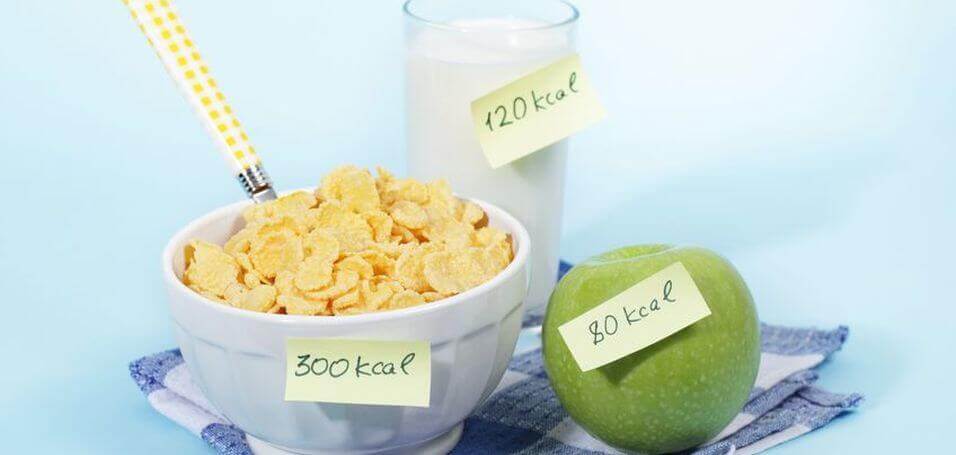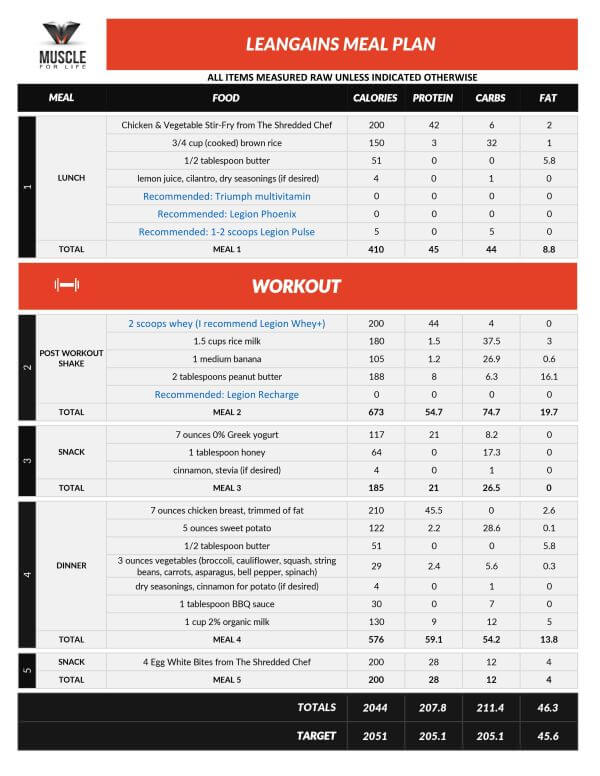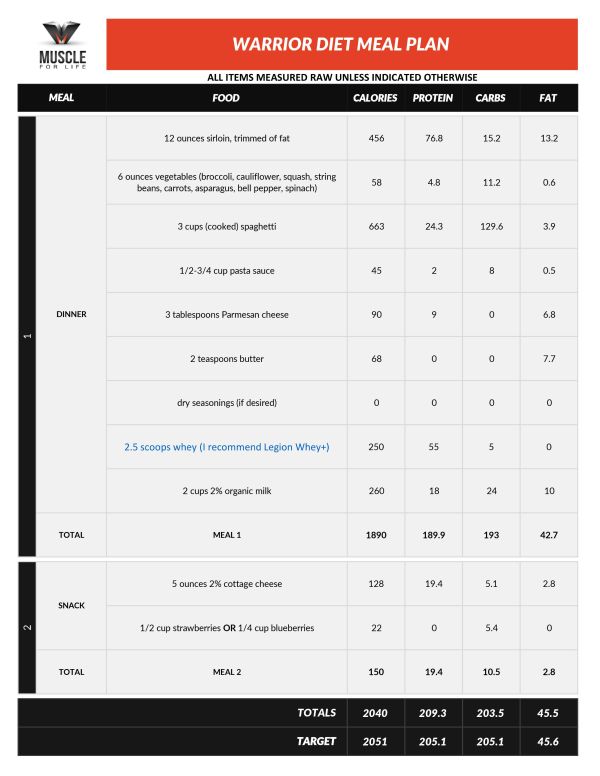Intermittent fasting is pretty simple.
At bottom, you don’t eat for most of the day, then you cram all of your calories into an “eating window” that can last anywhere from a couple to 6 to 8 hours.
If that sounds stupid, uncomfortable, or even unhealthy, I understand. I thought the same thing when I first heard about it years ago.
It turns out, though, that it’s not like other fad diets. It’s not going to go the way of the grapefruit diet, “detox” cleanses, and the dodo bird.
On the contrary, intermittent fasting can be an effective tool for improving dietary compliance, it has good science on its side, and it doesn’t have to be unpleasant.
In fact, many people enjoy IF more than traditional eating patterns, mainly because it allows you to have larger meals.
What IF isn’t, though, is a miracle maker.
It won’t automagically help you gain muscle and lose fat at the same time, burn away that belly fat, or stay young forever.
As you’ll learn in this article, the fundamentals of proper dieting still very much apply, and the main reason to do it is simply because you like it.
It isn’t complicated, either. There are just 5 simple steps to getting started:
- Choose which protocol you want to follow.
- Calculate your calories.
- Calculate your macronutrients.
- Create a meal plan that works.
- Train while fasted (optional).
Let’s take a look at each.
- 1. Choose which protocol you want to follow.
- 2. Calculate your calories.
- 3. Calculate your macronutrients.
- 4. Create a meal plan that works.
- 5. Train while fasted (optional).
- The Bottom Line on Getting Started with Intermittent Fasting
Table of Contents
+Want to listen to more stuff like this? Check out my podcast!
1. Choose which protocol you want to follow.
Intermittent fasting has really taken off in recent years, and there are several popular routines to choose from.
The ones you’ll hear the most about in fitness circles are Leangains, Eat Stop Eat, The Warrior Diet, and alternate-day fasting.
There are many others, of course, but all that I’ve seen are just derivatives of the above, and thus aren’t worth mentioning.
Let’s take a closer look at each of those above, and see what will best fit your needs.
Leangains
Leangains is an intermittent fasting diet created and popularized by Martin Berkhan.
It was designed specifically for weightlifters and people who care about their body composition, and it’s why IF has gained so much traction in the bodybuilding scene.
It’s also my personal favorite out of the bunch because it’s simple, effective, and doesn’t involve inordinately long fasts.
Here’s how it works:
- Men should fast for 16 hours and eat all food in the other 8 hours of the day. Women should fast for 14 hours and eat food in the remaining 10 hours.
- The fast starts after you’ve eaten your last meal of the day, and ends with your first meal of the day.
- You aren’t supposed to eat or drink any calories during the fast, but black coffee, zero-calorie sweeteners, diet soda, and sugar-free gum are allowed.
So, for example, if you’re a man and you eat your last meal at 9 PM at night, then you won’t eat your next meal until 1 PM the following day. If you’re a woman, you break your fast two hours sooner, at 11 AM.
As you can see, Leangains more or less boils down to “skip breakfast,” which many people like to do anyway.
Eat Stop Eat
Eat Stop Eat is an intermittent fasting protocol designed by Brad Pilon.
It’s easy to understand and implement, but it calls for long fasts that can grate on your nerves and pit you against ever-growing hunger and cravings.
Here’s the rundown:
- You fast for 24 hours once or twice per week.
- You can start your fasts when you like, but they must continue for 24 hours.
- You aren’t supposed to eat or drink any calories while fasting, but you’re allowed calorie-free beverages like coffee and tea.
That’s it.
If you find that you can’t fast for 24 hours without pillaging your fridge afterward and bingeing, then you can work up to it by fasting for as long as you can, gradually increasing toward the 24-hour target.
The Warrior Diet
The Warrior Diet is a style of intermittent fasting popularized by the book of the same name, written by Ori Hofmekler.
It involves “fasting” for 20 hours a day and eating most of your food in one large meal each night.
I say “fasting” because in this system, you’re allowed to eat a few small meals of fruit, vegetables, and protein during the 20-hour period leading up to your big meal. Doing this elevates insulin levels, which technically means you’re no longer fasting.
Another quibble I have with The Warrior Diet is Hofmekler claims that eating most of our calories at night is more in line with our biology, and that it can help us build muscle and lose fat faster, sleep better, and more.
Unfortunately, there simply isn’t any good evidence to support these claims. In fact, research refutes some of them.
I should also mention that The Warrior Diet makes it difficult to hit your macros without wanting to puke (try eating just 150 to 200 grams of protein in one meal and see how you feel, not to mention your carbs and fats).
So, in closing, the only reason I’d recommend The Warrior Diet to anyone is if they just really enjoy eating one meal per day.
Alternate-Day Fasting
As you can guess, alternate-day fasting (ADF) is a method of intermittent fasting where you alternate between days of fasting and eating.
As with The Warrior Diet, your “fasting” days aren’t true fasts–you’re supposed to eat about 20 to 25% of your total daily energy expenditure (TDEE), or about 500 to 600 calories for most people.
On your eating days, you’re supposed to eat more or less how much energy you burn on those days.
As ADF is primarily a weight loss diet, you’re not supposed to increase caloric intake to compensate for the low-calorie days. This way, you can lose weight over time.
ADF can make sense for people that are very overweight or sedentary, but it’s not suitable to most of us for two reasons:
- If you want to minimize muscle loss, you’re going to have to eat nothing but protein on your low-calorie days.
- It’s not workout friendly (no matter which days you train on, your workouts are going to be worse than usual).
So, Which Protocol Should You Choose?
Unless you have a strong reason to choose another, go with Leangains.
It’s a simple and workable intermittent fasting method that is scientifically proven to be viable.
Want to learn more about these intermittent fasting protocols? Check out this article.
2. Calculate your calories.

You may have heard that you don’t have to watch your calories with intermittent fasting.
No matter what type of diet you follow, caloric intake is always king.
If you want to lose weight, you need to eat fewer calories than you burn, and if you want to gain weight, you need to eat more.
End of story.
That said, intermittent fasting may help you better control your caloric intake by making the overall experience of dieting more enjoyable. The better you can stick to the plan, the better your results will be in the long run.
How many calories should you be eating, though?
Well, there are are many different ways to figure this out, but I’m going to make it really easy for you. Just use this calculator:
Want to save your results?
Enter your email so we can send them to you.
Plug in your weight, estimated body fat percentage, and activity level, and it will spit out approximately how much lean muscle you have (LBM) as well as your basal metabolic rate (BMR) and total daily energy expenditure (TDEE).
From there, use the following guidelines to determine how many calories you should be eating every day:
- To lose weight, eat 75 to 80% of your TDEE.
- To gain weight, eat 110 to 115% of your TDEE.
- To maintain your weight, eat 100% of your TDEE.
And voila, you’re done.
As you can see, this calculator also allows you to adjust your macros, which brings us to the next step…
Want to know more about calculating how many calories you should eat? Check out this article.
3. Calculate your macronutrients.
You’ve probably heard that not all calories are identical. That “a calorie isn’t a calorie.”
This isn’t true if all you want to do is lose or gain weight.
If, however, you want to lose fat and not muscle (or gain muscle and not fat), then it’s very true. Some calories are more important than others.
For example…
- Eating enough protein helps you better recover from your workouts, preserve muscle while dieting, control hunger, and gain muscle effectively.
- Eating enough carbs helps you perform better in your workouts and gain muscle faster.
- Eating enough fat promotes a healthy hormone profile, helps you better absorb the nutrients you eat and have healthy skin and hair.
That’s why you have to do more than getting your calories right. You have to get your “macros” right, too (eat the right amounts of protein, carbs, and fat).
And how do you do that, exactly?
Let’s start by figuring out your protein intake.
- If your goal is to lose fat, research shows that you should eat about 1 to 1.2 grams of protein per pound of body weight per day for the best results.
If you’re very overweight (25%+ body fat in men and 30%+ in women), then you can drop your protein intake to 1 gram per pound of lean body mass.
- If you want to gain or maintain your weight, then 1 gram of protein per pound of body weight per day is sufficient.
You should then calculate your fat intake next.
- If you want to lose fat, eat between 0.2 and 0.25 grams of fat per pound of body weight per day.
- For maintenance or muscle gain, bump that up to 0.3 to 0.35 grams per pound per day.
That leaves your carbs, which should simply comprise your remaining calories for the day (30 to 50% of total daily calories for most people).
I could show you how to calculate this by hand, but I’d recommend that you just use the calculator above. It makes it quick, easy, and painless.
Want to know more about how to calculate your macros? Check out this article.
4. Create a meal plan that works.
Your efforts to build your best body ever can be thwarted by stupidly simple things.
Not having the right foods at home, for example. Or being too restrictive with the foods you “allow” yourself to eat. Or accidentally eating more calories that you mean to.
That’s why I recommend you become skilled at meal planning. It’s the simplest way to guarantee results in the gym.
A meal plan is exactly what it sounds like: a plan for what you’re going to eat and when.
It doesn’t have be boring, restrictive, or inconvenient, either. In fact, a good meal plan is the complete opposite. You should look forward to your meals, you should eat the foods you like, and it should never feel burdensome.
Here are a few examples:
If you want to know how to make meal plans like this, check out this article.
5. Train while fasted (optional).
At this point, you may be wondering how exercise fits into all of this.
Well, many people that do intermittent fasting also do a lot of “fasted training.”
Many people mistakenly think these are the same thing, but they’re not. When we’re talking intermittent fasting, we’re talking about when we eat. Fasted training, on the other hand, is when we exercise.
Basically, if you exercise after having fasted (real fasting, by the way–no food or calories) for 5 to 6 hours, it’s fasted training.
Your insulin levels are low, and your body is relying solely on its energy stores to stay alive.
On the other hand, if you exercise after having eaten in the last few hours, it’s “fed” training because insulin levels are elevated and your body is running at least partly on energy obtained from the meal.
Now, you don’t have to train while fasting if you’re doing IF (you can work out after breaking your fast), but you may find it more convenient.
Many people doing IF like to work out first thing in the morning, and break their fasts afterward with a big post-workout meal.
Many people also like to do fasted training while cutting, because it helps you burn more fat in your workouts, and especially “stubborn fat” that clings to your abs, hips, and thighs.
You can also combine it with a few supplements to further amplify these fat-burning benefits.
Want to learn more about fasted training? Check out this article.
The Bottom Line on Getting Started with Intermittent Fasting
Millions of people are looking for shortcuts and “hacks” to gain muscle and lose fat faster.
Many PDF, pill, and powder pushers often sell intermittent as one. The One, even.
Well, it’s not.
It’s just an unconventional way to structure your meal timing, and it may or may not suit your preferences and lifestyle.
If it does, you’ll probably find it greatly beneficial in the long run. If it doesn’t, you’re not missing out if you stick with traditional meal frequency.
So, if it has tickled your fancy, give it an honest try for a month or two, and see how your body responds.
What’s your take on intermittent fasting? Have anything else to share? Let me know in the comments below!
Scientific References +
- Moro, T., Tinsley, G., Bianco, A., Marcolin, G., Pacelli, Q. F., Battaglia, G., Palma, A., Gentil, P., Neri, M., & Paoli, A. (2016). Effects of eight weeks of time-restricted feeding (16/8) on basal metabolism, maximal strength, body composition, inflammation, and cardiovascular risk factors in resistance-trained males. Journal of Translational Medicine, 14(1), 290. https://doi.org/10.1186/s12967-016-1044-0
- Kinsey, A. W., & Ormsbee, M. J. (2015). The health impact of nighttime eating: Old and new perspectives. In Nutrients (Vol. 7, Issue 4, pp. 2648–2662). MDPI AG. https://doi.org/10.3390/nu7042648
- Moro, T., Tinsley, G., Bianco, A., Marcolin, G., Pacelli, Q. F., Battaglia, G., Palma, A., Gentil, P., Neri, M., & Paoli, A. (2016). Effects of eight weeks of time-restricted feeding (16/8) on basal metabolism, maximal strength, body composition, inflammation, and cardiovascular risk factors in resistance-trained males. Journal of Translational Medicine, 14(1), 290. https://doi.org/10.1186/s12967-016-1044-0
- Seimon, R. V., Roekenes, J. A., Zibellini, J., Zhu, B., Gibson, A. A., Hills, A. P., Wood, R. E., King, N. A., Byrne, N. M., & Sainsbury, A. (2015). Do intermittent diets provide physiological benefits over continuous diets for weight loss? A systematic review of clinical trials. Molecular and Cellular Endocrinology, 418, 153–172. https://doi.org/10.1016/j.mce.2015.09.014
- Phillips, S. M., & van Loon, L. J. C. (2011). Dietary protein for athletes: From requirements to optimum adaptation. Journal of Sports Sciences, 29(SUPPL. 1). https://doi.org/10.1080/02640414.2011.619204
- Helms, E. R., Aragon, A. A., & Fitschen, P. J. (2014). Evidence-based recommendations for natural bodybuilding contest preparation: Nutrition and supplementation. In Journal of the International Society of Sports Nutrition (Vol. 11, Issue 1, pp. 1–20). BioMed Central Ltd. https://doi.org/10.1186/1550-2783-11-20
- Halton, T. L., & Hu, F. B. (2004). The effects of high protein diets on thermogenesis, satiety and weight loss: A critical review. Journal of the American College of Nutrition, 23(5), 373–385. https://doi.org/10.1080/07315724.2004.10719381
- Tipton, K. D., & Ferrando, A. A. (2008). Improving muscle mass: Response of muscle metabolism to exercise, nutrition and anabolic agents. Essays in Biochemistry, 44, 85–98. https://doi.org/10.1042/BSE0440085
- Burke, L. M., Kiens, B., & Ivy, J. L. (2004). Carbohydrates and fat for training and recovery. Journal of Sports Sciences, 22(1), 15–30. https://doi.org/10.1080/0264041031000140527
- Helms, E. R., Aragon, A. A., & Fitschen, P. J. (2014). Evidence-based recommendations for natural bodybuilding contest preparation: Nutrition and supplementation. In Journal of the International Society of Sports Nutrition (Vol. 11, Issue 1). BioMed Central Ltd. https://doi.org/10.1186/1550-2783-11-20
- Horowitz, J. F., Mora-Rodriguez, R., Byerley, L. O., & Coyle, E. F. (1997). Lipolytic suppression following carbohydrate ingestion limits fat oxidation during exercise. American Journal of Physiology - Endocrinology and Metabolism, 273(4 36-4). https://doi.org/10.1152/ajpendo.1997.273.4.e768
- Gjedsted, J., Gormsen, L. C., Nielsen, S., Schmitz, O., Djurhuus, C. B., Keiding, S., Ørskov, H., Tønnesen, E., & Møller, N. (2007). Effects of a 3-day fast on regional lipid and glucose metabolism in human skeletal muscle and adipose tissue. Acta Physiologica, 191(3), 205–216. https://doi.org/10.1111/j.1748-1716.2007.01740.x












